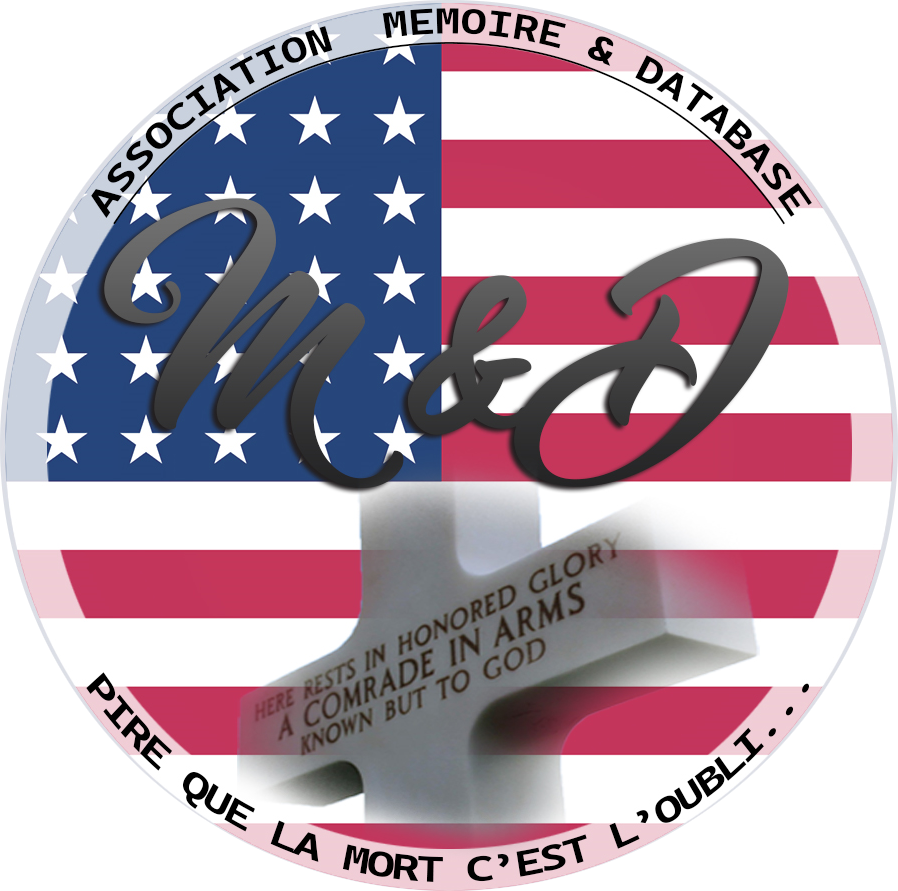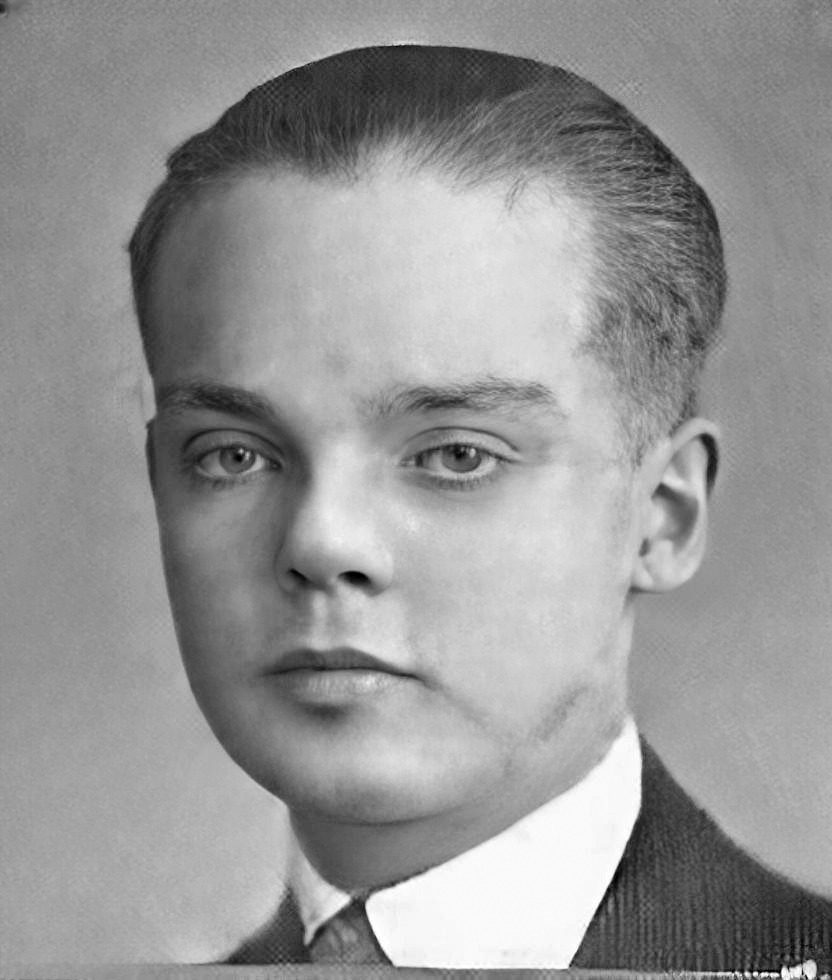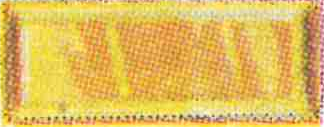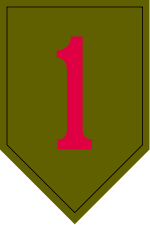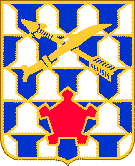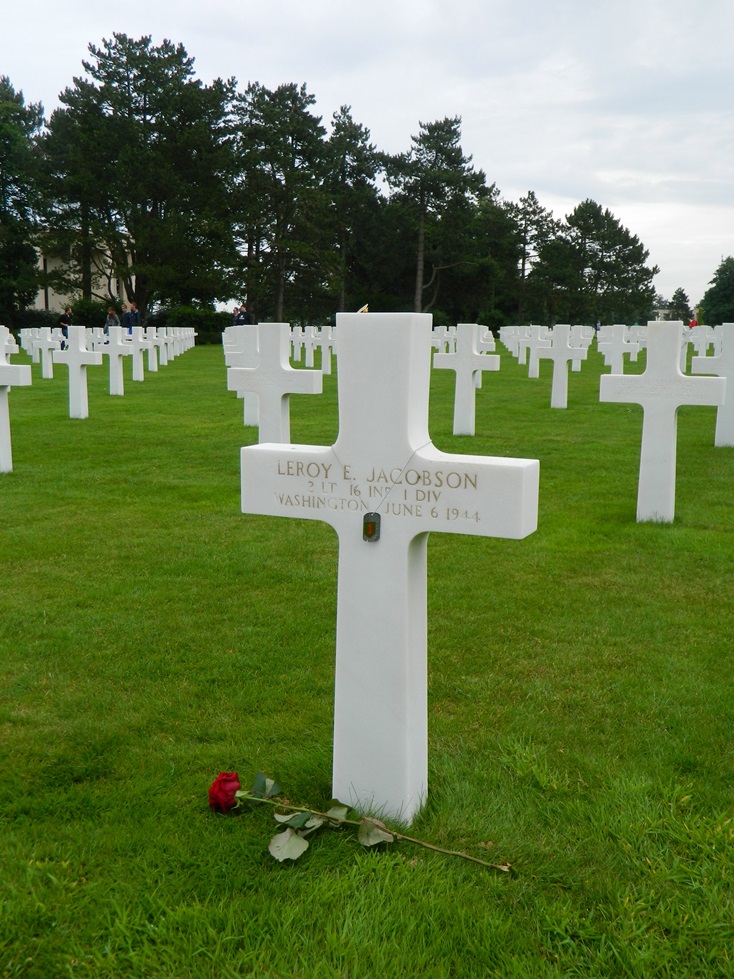|
Leroy Edgar JACOBSON
| ||||||||||||||||||||||||||||
|---|---|---|---|---|---|---|---|---|---|---|---|---|---|---|---|---|---|---|---|---|---|---|---|---|---|---|---|---|
|
Source : Nhdsilentheroes.org (Ellen Marchese) | ||||||||||||||||||||||||||||
| NUMBER OF SERVICE | O-1323574 () | |||||||||||||||||||||||||||
| AGE | 34 yo | |||||||||||||||||||||||||||
| DATE OF BIRTH |
25 mars 1910 Vancouver, Greater Vancouver Regional District, British Columbia, CANADA | |||||||||||||||||||||||||||
| ENLISTMENT STATE | WASHINGTON | |||||||||||||||||||||||||||
| FAMILY | Epouse : Mary Isabella Uglum Jacobson | |||||||||||||||||||||||||||
| RANK |
| |||||||||||||||||||||||||||
| FONCTION | Infantry Man | |||||||||||||||||||||||||||
| JOB BEFORE ENLISTEMENT |  | |||||||||||||||||||||||||||
| DATE of ENLISTEMENT | 23 octobre 1942 WASHINGTON | |||||||||||||||||||||||||||
| COMPANY | Company E | |||||||||||||||||||||||||||
| BATTALION | 2nd Battalion | |||||||||||||||||||||||||||
| REGIMENT | 16th Infantry Regiment | |||||||||||||||||||||||||||
| DIVISION | 1st Infantry Division | |||||||||||||||||||||||||||
| DATE OF DEATH | 6 June 1944 |
Source : Aurélie & Sloan Quoturel | ||||||||||||||||||||||||||
| STATUS | KIA | |||||||||||||||||||||||||||
| PLACE OF DEATH | Omaha Beach | |||||||||||||||||||||||||||
| CEMETERY TEMPORARY |
CEMETERY TEMPORARY of Saint Laurent N°3582
| |||||||||||||||||||||||||||
| CEMETERY | NORMANDY AMERICAN CEMETERY of Colleville | |||||||||||||||||||||||||||
| GRAVE |
| |||||||||||||||||||||||||||
| DECORATION |
| |||||||||||||||||||||||||||
| ||||||||||||||||||||||||||||
| STORY | ||||||||||||||||||||||||||||
|
Contributed by Taylor Walsh Leroy E. Jacobson was born in Vancouver, British Columbia, Canada, but fought for the United States, which became his home and where he planned to continue his life after the war. Not much is known about his upbringing due to his immigrant status. Leroy Jacobson attended Queen Anne High School in Seattle until 1928. The 1930 census shows him living in Seattle with an aunt and uncle, Edward and Lauretta Hudson. He attended the University of Washington for three years before the Great Depression struck. He was a member of the Theta Delta Chi fraternity. He worked as a crew member on ships, traveling to Tokyo even into the latter part of the 1930s. On October 22, 1937, he married Mary Isabella Uglum, and the 1940 census shows the couple living in Seattle and Jacobson working as an accountant for the railroad. Leroy Jacobson enlisted in the U.S. Army on October 23, 1942. Despite being injured during training, Jacobson refused to be discharged. His wife, who later destroyed all photographs of him because of the pain they brought forth, drove to San Diego from Seattle to nurse him back to health. Washington state flourished during the Second World War. It was a time of booming industry but also a time marked by unfortunate cultural implications. World War II’s lasting influence can still be seen throughout the state today, as many of the products are still produced here. After tricking the enemy into believing they would invade at Calais, the more convenient location, the Allies prepared to attack at Normandy. The weather was an issue, and thus the mission was postponed by one day. The plan was for the American troops to land at Omaha and Utah Beaches, the British forces at Sword and Gold Beaches, and the Canadians at Juno Beach. Omaha Beach was the most heavily defended. Lieutenant Leroy E. Jacobson landed at H plus 1 minute: 6:31 a.m., on Omaha Beach June 6, 1944, one minute after the initial attack. His company, E Company, lost their radio communication, and many of their weapons were jammed with sand. Some boats sank, some men drowned, and others saw many of their men killed by the enemy or friendly, fire. We still do not know what exactly happened to Lieutenant Jacobson. We know what matters, and as a platoon leader, he encouraged his men to go on, even though he eventually could not. His wife, Mary, gave birth to their son, Ed, three weeks after his father was killed. Lieutenant Leroy E. Jacobson was once just a name to me, and I am so glad that he is now so much more in my eyes. However, it makes me sad to know there are so many men like Jacobson who remain silent heroes who deserve recognition. But this is a start. I feel as though through this program, I have come to know Jacobson, which is bittersweet; something I’m sure everyone has experienced as well. Jacobson was born in Canada but fought for the United States, which became his home and where he planned to continue his life after the war. Not much is known about his upbringing due to his immigrant status. Still, He attended the University of Washington for three years before the Great Depression struck, and he enlisted in the Army shortly after Pearl Harbor. Despite being injured, Jacobson refused to be discharged. Absolutely nothing would stop Jacobson from fighting for our country and our world. We know what matters: he fought for a country that was not his first home, he stopped at nothing to do so, and as a platoon leader, encouraged his men to go on, even though he eventually could not. | ||||||||||||||||||||||||||||
|
Mary Isabella Uglum Jacobson. Courtesy of Ed Jacobson. Source : Nhdsilentheroes.org |
Leroy Jacobson’s grave at Normandy American Cemetery in Colleville-sur-Mer, France, 2014. Courtesy of Nicholas Coddington and Taylor Walsh. Source : Nhdsilentheroes.org | |||||||||||||||||||||||||||
|
Source : Fold 3 | ||||||||||||||||||||||||||||
| | ||||||||||||||||||||||||||||
Activated/Activé |
Normandy/Normandie |
| 17 Jun 1917 | Days of Combat/Jour de Combat 443 |
| Casualties/Victimes 20 659 | |
Entered Combat/Entré au combat |
|
| 8 Nov 1942 North Africa | |
|
Commanding Generals/Commandants généraux Maj. Gen. Donald Cubbison (Feb 41 - Aug 42) |
Campaigns/CampagnesAlgeria-French Morocco (8 Nov 42 - 11 Nov 42)
|
PLAN DE ROUTE DE LA CAMPAGNE de MEDITERANNEE - CAMPAIGN ROUTE MAP |
|
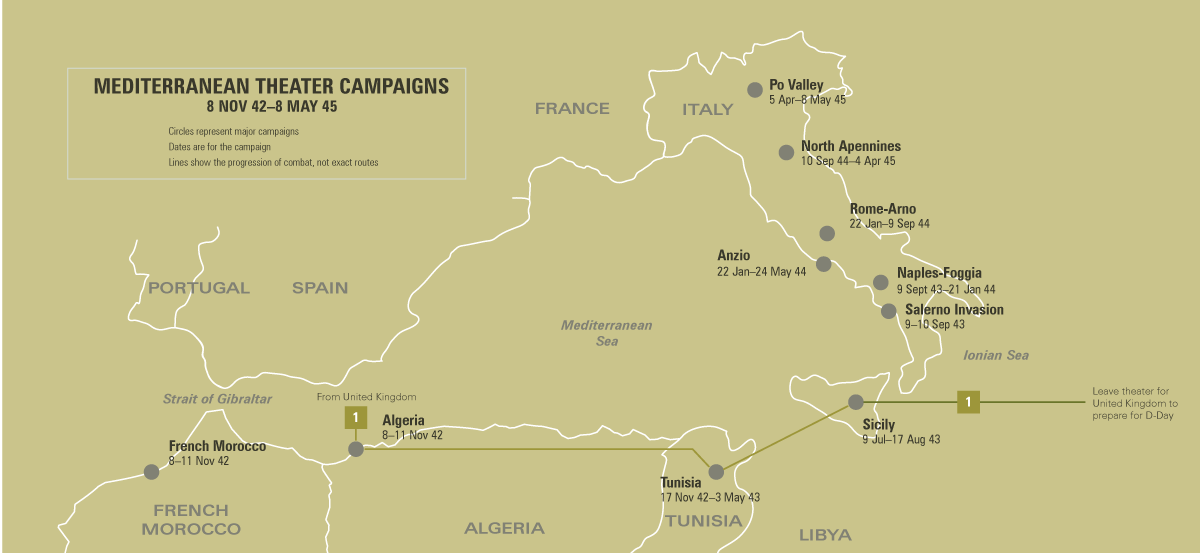 |
|
PLAN DE ROUTE DE LA CAMPAGNE - CAMPAIGN ROUTE MAP |
|
 |
|
DIVISION CHRONICLEThe 1st Infantry Division saw its first combat in World War II in North Africa, landing at Oran and taking part in the initial fighting, 8-10 November 1942. Elements then took part in seesaw combat at Maktar, Medjez el Bab, Kasserine Pass, Gafsa, El Guettar, Beja, and Mateur, 21 January-9 May 1943, helping secure Tunisia. The First was the first ashore in the invasion of Sicily, 10 July 1943 ; it fought a series of short, fierce battles on the island's tortuous terrain. When that campaign was over, the Division returned to England to prepare for the Normandy invasion. The First Division assaulted Omaha Beach on D-day, 6 June 1944, some units suffering 30 percent casualties in the first hour, and secured Formigny and Caumont in the beachhead. The Division followed up the St. Lo break-through with an attack on Marigny, 27 July 1944, and then drove across France in a continuous offensive, reaching the German border at Aachen in September. The Division laid siege to Aachen, taking the city after a direct assault, 21 October 1944. The First then attacked east of Aachen through Hurtgen Forest, driving to the Roer, and moved to a rest area 7 December for its first real rest in 6 months' combat, when the von Rundstedt offensive suddenly broke loose, 16 December. The Division raced to the Ardennes, and fighting continuously from 17 December 1944 to 28 January 1945, helped blunt and turn back the German offensive. Thereupon, the Division attacked and again breached the Siegfried Line, fought across the Roer, 23 February 1945, and drove on to the Rhine, crossing at the Remagen bridgehead, 15-16 March 1945. The Division broke out of the bridgehead, took part in the encirclement of the Ruhr Pocket, captured Paderborn, pushed through the Harz Mountains, and was in Czechoslovakia, at Kinsperk, Sangerberg, and Mnichov, when the war in Europe ended.
|
CHRONIQUE DE DIVISIONLa 1ère Division d'infanterie vit son premier combat en Afrique du Nord lors de la Seconde Guerre mondiale, débarquant à Oran et prenant part aux combats initiaux, du 8 au 10 novembre 1942. Les éléments participèrent ensuite aux combats en balançant à Maktar, Medjez el Bab, Col de Kasserine, Gafsa, El Guettar, Beja et Mateur, du 21 janvier au 9 mai 1943, contribuant à la sécurisation de la Tunisie. Le premier a été le premier à terre dans l'invasion de la Sicile, le 10 juillet 1943; il a combattu une série de batailles courtes et féroces sur le terrain tortueux de l'île. Quand cette campagne fut terminée, la Division revint en Angleterre pour se préparer à l'invasion de la Normandie. La première division a attaqué Omaha Beach le jour J, le 6 juin 1944, certaines unités subissant 30% de pertes au cours de la première heure et sécurisant Formigny et Caumont dans la tête de pont. La Division a suivi la percée de Saint-Lô avec une attaque sur Marigny, le 27 juillet 1944, puis a traversé la France dans une offensive continue, atteignant la frontière allemande à Aix-la-Chapelle en septembre. La Division a assiégé Aix-la-Chapelle après un assaut direct, le 21 octobre 1944. Le Premier a ensuite attaqué à l'est d'Aix-la-Chapelle par Hurtgen Forest, jusqu'à la Roer, et s'est installé dans une aire de repos le 7 décembre pour son premier repos. combat de mois, quand l'offensive de von Rundstedt se déchaîna subitement, le 16 décembre. La division a couru vers les Ardennes, et combat continuellement du 17 décembre 1944 au 28 janvier 1945, a aidé à émousser et à retourner l'offensive allemande. La Division attaqua de nouveau la ligne Siegfried, traversa la Roer, le 23 février 1945, et se dirigea vers le Rhin, traversant la tête de pont de Remagen, du 15 au 16 mars 1945. La division sortit de la tête de pont. dans l'encerclement de la poche de la Ruhr, capturé Paderborn, poussé à travers les montagnes du Harz, et était en Tchécoslovaquie, à Kinsperk, Sangerberg et Mnichov, lorsque la guerre en Europe a pris fin.
|
| SOURCE INFORMATION & PHOTO | Armydivs.squarespace.com |
|---|
| SOURCE INFORMATION & SOURCE PHOTO | Ed Jacobson - Nhdsilentheroes.org - Abmc.gov - Findagrave.com |
|---|---|
| PROGRAMMER | Victor, Jean-Philippe, Eric, Henri, Garrett, Clive, Frédéric & Renaud |


